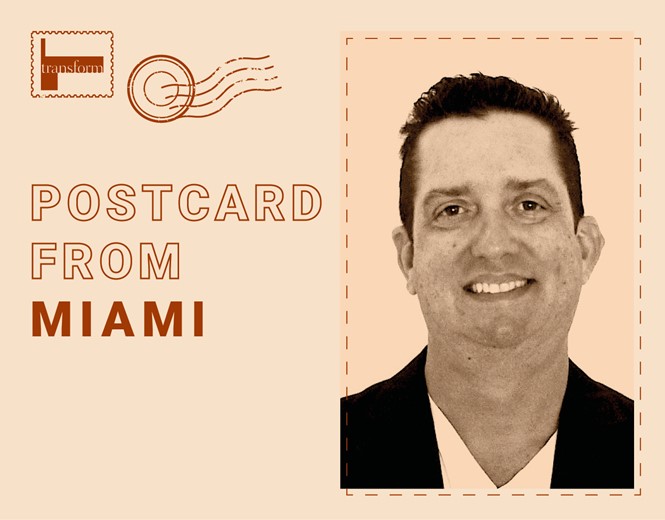Postcard from Miami

Juan Thomas Sanchez, general manager of the US and Latin America for design agency fst, speaks to Transform magazine about branding and design in Miami, from how the city's culture influences the agency's work to how design strategy in Miami meets the one in Latin America.
How much of your work with brands is informed by Miami's culture and lifestyle?
Interesting question! Our Miami office covers all of the Americas so not very much to be honest. It’s primarily because we purposely approach every project with a clean slate. We have to be completely available to the client’s challenge and where the audience is no matter where in the world. Miami culture and lifestyle certainly inform other things, but if there’s a geographic or cultural sensibility that we could point to it would probably be the UK. I think it’s one of the things that draws clients to us. We have a distinct way of working that comes with very high creative standards, but also an approachability and a willingness to take risks that clients find attractive and that I believe ultimately comes through in the work. You could say we take the work seriously, but ourselves not so much!
Much of your work in Miami has been with Latin American brands. How much of ‘Miami’s branding’ perspective do you bring to your work with brands there? In what ways is your work relevant to both audiences?
Actually, taking it altogether, to look at our work, you’d say it’s a mixed bag of global, regional and market-specific brands. Miami is kind of a crossroads city in that it’s clearly the US but it’s been an important hub for multinationals the world over and in a serious way since the 90s. Those influences plus the diversity and influence of Latin America and the Caribbean are everywhere. Latin America is very accessible whether it’s language, food, companies, TV/news or a flight. It’s not so much about proxy and as it is proximity. And, by that I mean, Miami is not a substitute for being in another market, but you can figuratively and literally get there from here. For example, if we need to do something for a Mexican audience or Colombian or Puerto Rican we can ensure that it’s highly relevant. It’s not foreign to us.
For many years Miami has been a gateway to South America, how you approach design strategy there?
Geography is just one aspect of design strategy. We don’t approach a job any differently if it’s for the US or Latin America. We do a good bit of work with no LatAm connection at all, for example, global work for North American companies and the North American market for US companies. It’s part of that crossroads dynamic again. In Miami, we get the chance to meet and work with people that in 18 months are somewhere else. It’s great when you get a call from someone and they say, “Hey, I’m in California now. You guys would be great for this.” I think it’s a recognition of the quality of the work and the trust we earn with clients.
How does fst’s work in Miami different than the one in Singapore? On a macro level, what are the biggest differences between branding in the US and in Asia?
I would say that at the core they’re very similar. If you work with one office, you’d likely feel very comfortable and natural working with another. That has a lot to do with our culture as a company, but also our approach to strategy-led design. Fundamentally, it’s a system for problem-solving with a creative output. It works, and has been proven many times over so there’s no reason to change it or to try to do it differently for the sake of ‘localisation’. The audience part is important, but it’s ultimately about one set of criteria that have to do with relevance. You have bigger questions to crack on the way to that question. I don’t mean to understate the importance of regional differences. You absolutely can’t get that wrong. But, equally, if you’re not thorough and thoughtful at a higher level and you’re making too many assumptions and jumping too quickly to conclusions, the big idea suffers. You want the creative to be fresh, engaging and to work hard for the client. Local relevance is a lower bar. You can find a lot of agencies that can deliver that. Great creative that sets itself apart from other agencies -- that’s a higher bar and a more rare thing to find.












